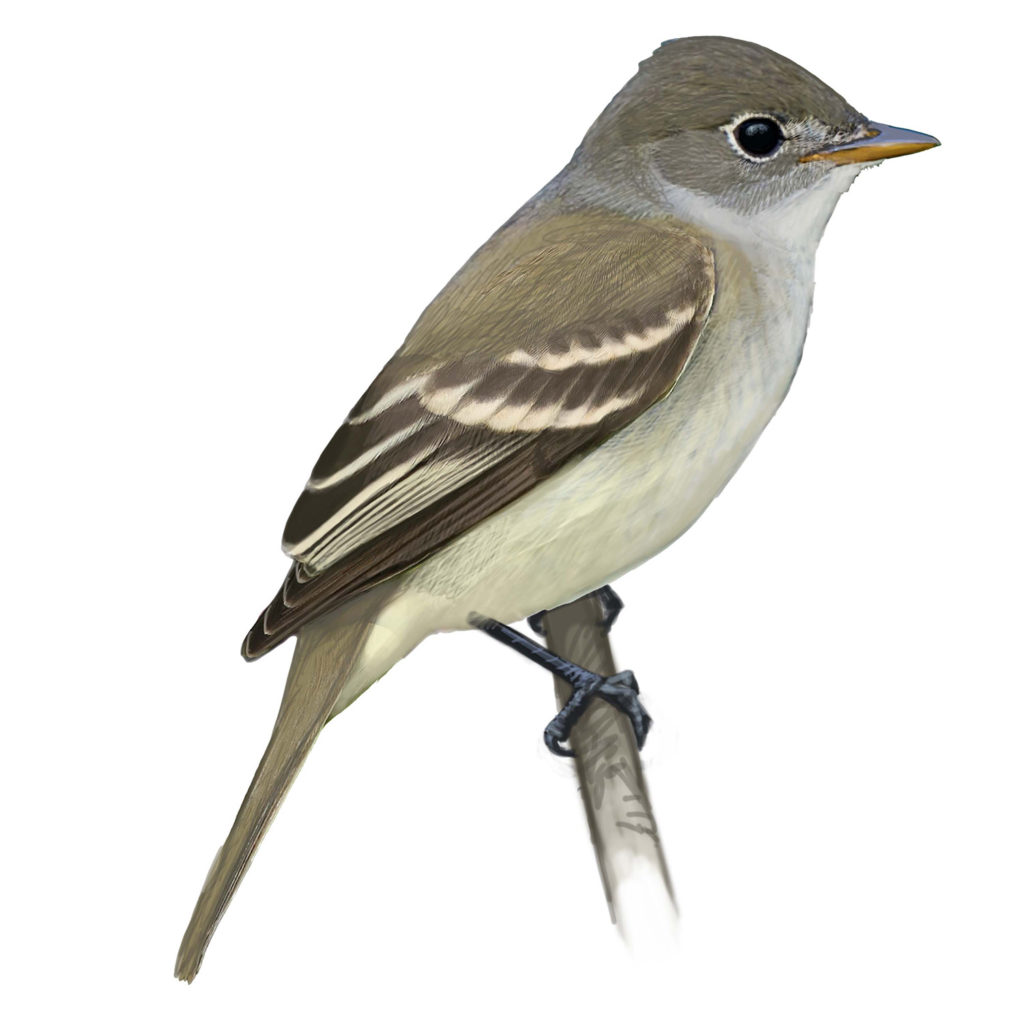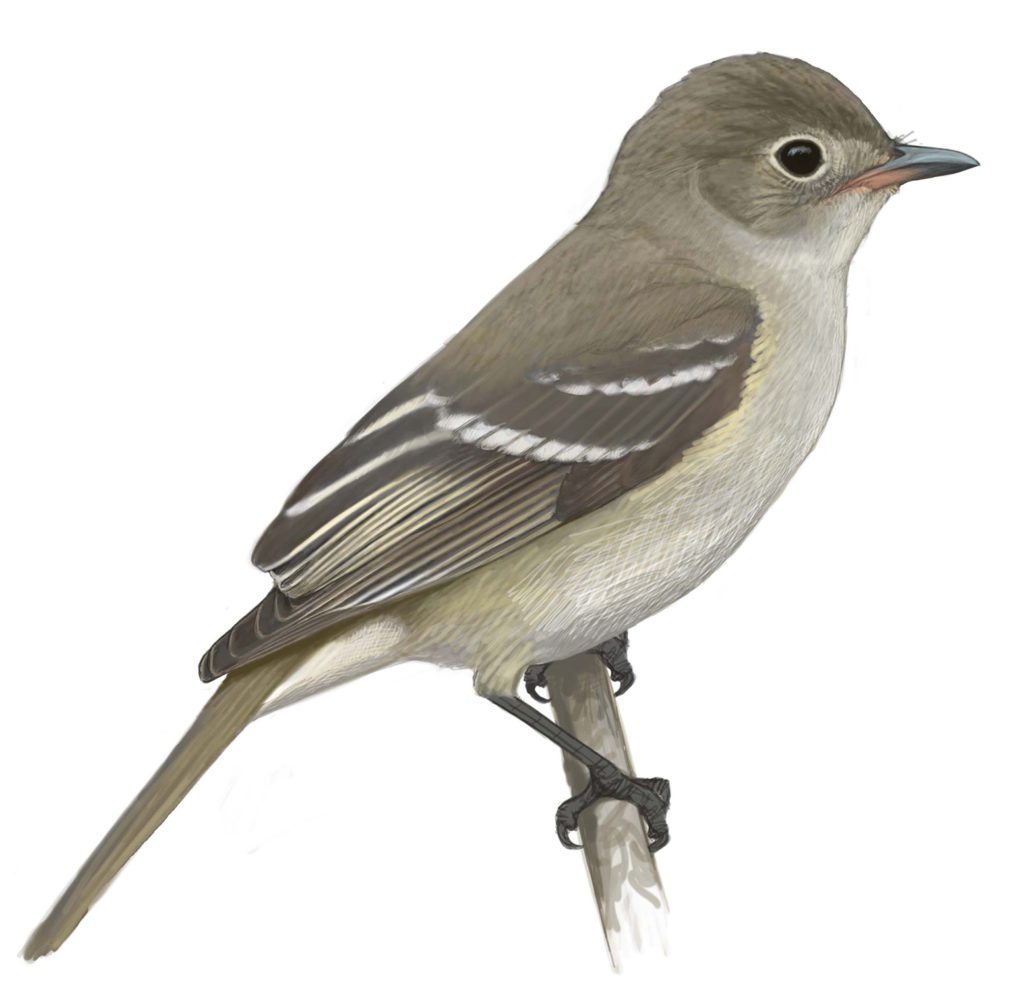With a recent surge in records of Elaenias north of Mexico, I was interested in figuring out a quick and simple way to distinguish Elaenia from Empidonax. The pattern of the folded primaries seems to work extremely well.
Willow Flycatcher Empidonax traillii

Small-billed Elaenia Elaenia parvirostris

Most species in these two genera of small flycatchers look alike – drab olive with wingbars and eyerings. The Empidonax present some of the most challenging identification problems of any birds in North America. And the Elaenias present similar challenges in Central and South America. Now mix these two genera together, and you have a real next-level challenge! Many of the North American Empidonax flycatchers winter in Central and South America where they meet some elaenias. But until recently there was no reason to seriously consider an elaenia when looking at a small flycatcher in North America.
Before 2020 there were only a few scattered records of elaenias north of Mexico – tantalizing fuel for birders’ daydreams, but not a real possibility. Then, between October 2020 and November 2021, no fewer than four elaenias were identified north of Mexico. These were in North Dakota, Florida, Quebec, and Illinois! Clearly an elaenia can show up anywhere, and given how inconspicuous they are it’s amazing that four were discovered, and reasonable to assume that more were present but never found.
Elaenias have a slightly different overall look from Empidonax – less compact, with a more bushy crest – but things like this are subjective and variable. I wanted to know if I could find an objective and reliable feature that would allow me to distinguish any elaenia from any empidonax, and it turns out it’s the pattern on the folded wing. The presence or absence of pale edges on the primaries is the best single feature to focus on to be sure which genus you are looking at.
Small-billed Elaenia vs White-crested Elaenia
Recent records of elaenias north of Mexico involve two migratory species from southern South America – three confirmed Small-billed Elaenias and two White-crested Elaenias, and other species are also possible. So once you’ve identified a bird as an elaenia there is still a lot of work to do to figure out which kind of elaenia. That’s a subject for a future post, but if you are lucky enough to find an Elaenia, focus on recording any calls, and study the wingbars, back/breast contrast, bill shape and color, crest shape, etc.
Looking back at previous North American records
To test this wing pattern feature I’ve looked at a lot of photographs, lots of live Empidonax and a few live elaenias. I also reviewed the previous records of elaenias in the US and Canada. It all checks out, except one…. A small flycatcher photographed in Rhode Island on 10 Nov 2008 has been considered a likely Elaenia, and is currently (Apr 2022) listed on eBird as “Elaenia sp”. However, it appears to be an Empidonax based on the wing pattern.


A very cute Small-billed Elaenia Elaenia parvirostris came to the feeder for a couple of days at Perkins, OK. Amazing.
A very cute Small-billed Elaenia Elaenia parvirostris (flycatcher from Mexico came to the feeder for a couple of days at Perkins, OK. Amazing.
Oh, I was told it probably was an American Goldfinch.